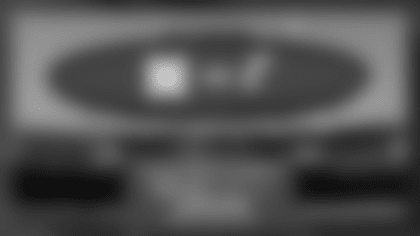The Chiefs played before a national television audience this past week. CBS Sports had its lead crew of Jim Nantz and Phil Simms in Kansas City for the first time since the 2010 playoff game against the Baltimore Ravens.
The game, originally scheduled for a 12 noon start, had been moved to late afternoon by the NFL to accommodate the network who, to no surprise, took notice of the team's 6-0 start and wanted to showcase the game to the nation.
Television rules, when it comes to professional sports. Lamar Hunt knew that back in 1960, when he famously wrote of football: "The sport has everything. And it televises well."
Indeed it does, as the ratings continue to prove. With television viewership not what it was, still few turn away when the programming is the National Football League. Hunt wrote as early as 1959 of the importance of all league teams having a share of the revenue from whatever network contract he could acquire.

Most followers of the early days of the American Football League had their introduction to the new league via a nationwide television contract. The first contract the AFL signed was with ABC-TV, who introduced many new innovations in televising professional football.
Pioneering concepts included the use of shotgun mics, unique camera locations and close-ups of people in the stands and sidelines, as well as other revolutionary new reporting techniques, such as a special unit suspended from an overhead blimp.
By 1963, forty AFL games on 17 dates were being carried to the nation's homes, including games played on 15 Sunday afternoons, Thanksgiving Day and on one Saturday. The televised sessions culminated with the league championship game. As a general rule, two games were carried on the Sunday dates, with one beamed to the eastern half of the country and one to the west.
This expanded coverage included the use of five and often six cameras, unheard of at that time. They included high-angle, field and portable-held cameras for dramatic close-up action and other shots.
As they are often situated today, two cameras were located on the 50-yard line, one on each 20-yard line, with one set high above the stadium and a fifth camera on the field on a dolly that moved up and down the field, along with the play. Each was equipped with zoom lenses so that action could be covered close up when the situation dictated. While all of these angles and cameras are common-place to viewers today, they were considered ahead of their time. Making the broadcasts even more unique, the contours of Kansas City's Municipal Stadium – constructed originally for baseball – made the viewing angles truly interesting to audiences that were used to watching football on television. NFL Films went so far as to air a special program, outlining the originality of some of the early footage shot at Municipal.
Today, television crews can command a staff of 100, but in the early 1960s, a crew of 30 to 35 persons was all that was required at the originating stadium, with an additional staff back at the studio.
By the time of the Chiefs arrival in Kansas City in 1963, Jack Buck, the famed baseball announcer, was handling play-by-play chores with George Ratterman on analysis. Curt Gowdy and Paul Christman made up the other team with Charlie Jones, the original voice of the Texans, handling regional pickups.
An early broadcast of an AFL game from 1962, between the then Dallas Texans and Buffalo Bills has just been acquired thanks to the generosity of former Texans/Chiefs receiver and team Hall of Famer Chris Burford and it provides a unique look at the way the medium approached its games, preferring spare commentary, compared to today's non-stop dialogue.
NBC-TV eventually took the contract to broadcast all AFL broadcasts in 1965, but ABC is where it all started.













